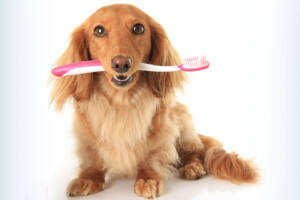
The Basics
There are several items listed at the beginning of your estimate that come standard with most surgical procedures.
-
- Pre-Surgical Exam: Performed by the veterinarian to assess your pet’s health and risk level before administering any anesthetic.
- Pre-Anesthetic Injection: Provides pain relief and reduces stress, so your pet is relaxed before their procedure.
- Surgical Catheter with Fluids: Keeps your pet hydrated and allows for rapid administration of important medications.
- Anesthesia – Intravenous: A potent sedative given to allow for endotracheal intubation.
- Anesthesia – Inhalant: A safe and reliable way to maintain anesthesia and quickly adjust sedation and pain levels.
- Anesthetic Monitoring: An experienced technician who is dedicated to monitoring your pet’s vitals and comfort for the duration of their procedure.
- Additional Anesthesia per 15 min: The first 30 minutes of anesthesia time are included. Additional time under anesthesia is priced by 15-minute intervals. We do our best to provide an estimated range of time, however, it is not always possible to accurately predict the final duration.
- Cefazolin (per ml): An intravenous antibiotic that is appropriate for every type of surgery.
The Clean-Up Process
After your pet is connected to the anesthesia machine and monitoring equipment, we move onto the dirty work. Every surface of each tooth is meticulously cleaned, then polished to perfection. The veterinarian performs a thorough examination to assess the health of each tooth and to look for any other oral abnormalities. On your estimate, the Canine Dental Cleaning is priced by the size of the dog. The Feline Dental Cleaning is priced the same for all cats.
Radiographs
When you go to the dentist, they tend to take x-rays at least once a year. We recommend taking the opportunity to have the same done for your pet during their cleaning as well. Just viewing their teeth is only the tip of the iceberg. Taking radiographs can show us if there are broken roots, abscess/infection, or other hidden issues that would otherwise go unnoticed. If we do see something suspicious, the veterinary team will give you a call to discuss the plan of action with you before they proceed. Similar to the cleaning, Full Mouth Radiographs are also priced by the size of the dog, while cats are the same regardless.
Extracting Teeth
In some cases, prior to the procedure, the veterinarian cannot completely rule out extracting one or more teeth. We often will not definitively know until we clean off the gunk and take x-rays. You may receive an estimate that has an extraction included on the high end as a worst-case scenario. We will only pull a tooth that we cannot save, but we want you to be prepared for that possibility on your final total.
- Extract [tooth]: Dogs and cats have four different types of teeth. Each type has a different price assigned to it. This can be based on the number of roots. Or it can be based on the level of decay. Some teeth can be so far gone, they just pop right out. Whereas, a fractured tooth with more stable roots can take a lot more effort.
- Nerve Block: Numbing shot administered before the extraction. If there are extractions in multiple areas of the mouth, more than one shot may be necessary.
- Consil Bone Graft Putty: When a tooth is pulled, there are essentially some holes where the roots used to live. Consil is used to fill the space and provide a matrix for new bone to grow.
- Post-extraction Radiograph: Taken to ensure no pieces of root are left behind, which could eventually abscess down the line.
- Tramadol: Pain medication sent home with dogs to administer for a few days after the procedure.
- Buprenorphine Syringes: Pain medication for cats that is easier to give than a pill.
- Clindamycin Hydrochloride: Antibiotic used in dogs for post-op administration.
- Convenia: Injectable antibiotic for cats that lasts for 14 days.
Optional Goodies
We offer some optional treatments to improve your pet’s future dental health, and hopefully, prolong the time between their dental cleanings. Sanos is a sealant for cats that prevents tartar formation. Oravet is the sealant for dogs and includes a month’s supply of chews to give daily at home. We also offer to place a Microchip if your pet does not have one and you would like to get one while they are under anesthesia. When you fill out your pre-surgical paperwork, you will be able to select whether you want the optional items as well.
What is Not Listed on Your Estimate
The items listed on an estimate do not fully represent your pet’s experience. They do not speak to the dedication of the passionate team of veterinarians and technicians working hard to keep your pet safe during their procedure. They double-check drug dosages. They cross off checklists. They offer comfort to stressed animals (and people). They prevent problems before they happen. They do not allow themselves to relax until their patient is safely in their owner’s arms again. They take continuing education to ensure they are abreast of the best practices and anesthetic protocols to reduce pain and stress and keep each animal safe and healthy. They are also available to answer any questions or discuss any concerns you may have about your estimate or your pet’s procedure.



